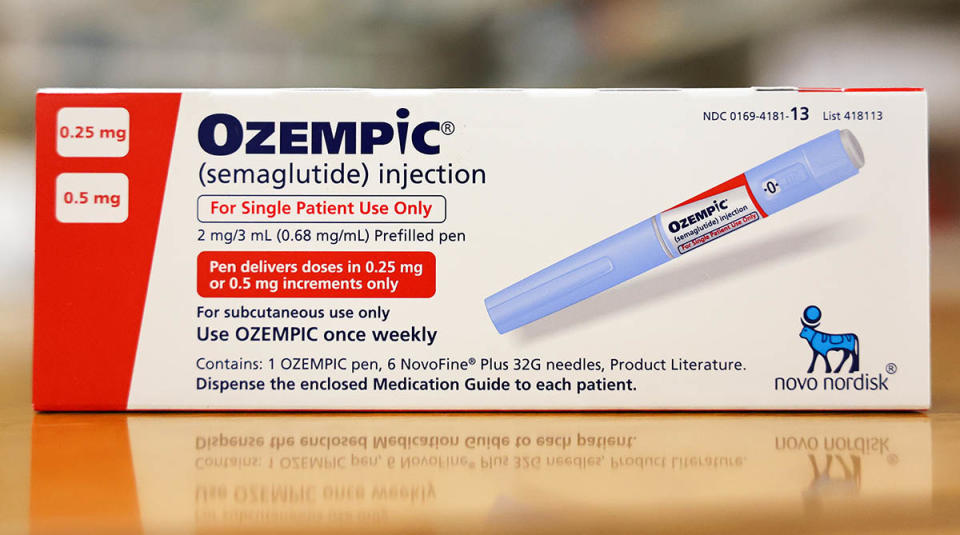Understanding the Ozempic Baby Boom

Is Ozempic giving a whole new meaning to the term “baby weight”?
The booming drug is driving the weight loss market, but might also be driving an increase in pregnancy rates among its users.
More from WWD
Seed's Latest Launch Is a Suppository That Promotes a Healthy Vaginal Microbiome
Spring Into Summer With Beauty and Well-being's Latest Pop-up
While the evidence is still largely anecdotal and not yet based on quantitative data, since the rise of GLP-1 weight loss drugs, a phenomenon known as “Ozempic babies” has broken out on social media. Essentially, patients and doctors are reporting an increasing number of surprise pregnancies after using a drug like Ozempic or Mounjaro, the two most popular pharmaceuticals in the category.
Experts posit the reason is twofold: First, doctors speculate that some GLP-1s could be impacting the efficacy of hormonal birth control methods. As well, as people lose weight, they become more fertile and, it stands to reason, potentially more sexually active as well, experts suggest.
“The medications are known to slow down gastric emptying, so it could alter the absorption of oral contraceptives,” said Dr. Angela Fitch, president of the Obesity Medicine Association and chief medical officer at Knownwell, a primary and obesity care platform.

Many of the drugs’ labels do include warnings for this interaction. For example, Eli Lilly’s Mounjaro label states: “Birth control pills by mouth may not work as well while using Mounjaro,” while Ozempic, manufactured by Novo Nordisk, also warns of “decreased efficacy of oral medication and possible pregnancy risks.”
In addition, excess weight often makes it harder to get pregnant, so it stands to reason that as patients lose weight their fertility increases.
“Being significantly overweight hinders ovulation,” said Dr. Mary Jane Minkin, an OB-GYN and clinical professor at Yale University.
“There’s data that people with obesity tend to have a harder time getting pregnant,” Fitch agreed. “When you lose weight, however you lose it, you become more fertile.”
It seems some patients understand this and some don’t. Many people come to Knownwell hoping to lose weight in order to get pregnant, Fitch reported. However, there’s an education gap for those who don’t know the implications of losing weight on their fertility. For example, a GLP-1 user may assume she is infertile and therefore doesn’t use birth control, leading to a surprise pregnancy.
“You’re not using birth control because you think you can’t get pregnant because of your fertility,” said Fitch. “A lot of people use their infertility as a birth control method, and they don’t get the right education.”
That fact is driving more providers to take the time to educate consumers and make specific recommendations.
“As a precaution, what I do in my practice, is for the first month that a patient is either on semaglutide or Mounjaro, I have them use a second method of birth control, basically the barrier method, which is a condom,” said Dr. Sharon Giese, a board certified plastic surgeon and the creator of the Elective Weight Loss Program.
Other practitioners recommend using a non-hormonal birth control method like an IUD, a recommendation supported by many pharmaceutical manufacturers. For example, Mounjaro’s label states users should employ two methods of birth control for the first four weeks of use and for four weeks after each dosage increase.
While reduced efficacy of birth control pills could be one reason for the Ozempic baby boom, some doctors are pointing to other — more obvious — reasons for the proliferation of surprise Ozempic pregnancies: They’re having more sex.
“I think that people are feeling a lot better about themselves because they’ve lost weight, and they just are more social and feel sexier. They are just having more activity in their life,” said Giese.
Whatever the reason, the safety implications have patients, providers and the drug manufacturers concerned. “We don’t know what these drugs do to infants and developing fetuses,” Fitch said.
Moreover, gathering the data to understand the impact of GLP-1s on fetus development is complicated and expected to take a decade or more. For starters, pregnant women or their doctors need to self-report cases, but are not required to do so. These self-reports, which can be via a hotline listed on the drug’s label, will be the basis for understanding how these medications may impact pregnancies. Because of this — and the fact that human clinical trials are impossible in this case — collecting sufficient data will take a long time.
“It’s going to take, unfortunately, many, many years to understand what the implications are,” said Dr. Sarah Oreck, a reproductive psychiatry expert and founder of maternal mental health and care platform Mavida Health. “What becomes difficult about these studies is that they’re confounders because some people who are taking Ozempic may also use substances or may also have depression or may also have multifactorial issues that can also be implicated in the outcomes.”
Therefore, drugs such as Zepbound, from the makers of Mounjaro, include warnings like, “Available data with tirzepatide in pregnant patients are insufficient to evaluate for a drug-related risk of major birth defects, miscarriage, or other adverse maternal or fetal outcomes. Based on animal reproduction studies, there may be risks to the fetus from exposure to tirzepatide during pregnancy.”
With GLP-1 usage on the rise — 30 million people in the United States could be on one by 2030, according to J.P. Morgan Research — experts predict more surprise pregnancies.
“The issue is that we’re going to see more of these accidental pregnancies and then what are the effects on the babies? We’re not talking about 100 people, but thousands, potentially 10,000s, potentially a million at some point,” said Fitch, adding that some early data does point to negative findings like “being small for gestational age.”
Due to the unknown, it is recommended that those who do become pregnant discontinue the medication immediately. In addition, those looking to get pregnant should stop using the medication six weeks before actively trying.
“Now that this is happening, there will likely be a lot more education and warnings around it,” Oreck said.
That being said, there’s a bright side.
“It may be something that’s used before people have to spend hundreds and thousands of dollars on assisted reproductive technologies, on IVF,” Oreck said, adding that it’s also a helpful modality to lose stubborn weight postpartum. “To me, it just feels more like this is finally another tool in our toolbox.”


